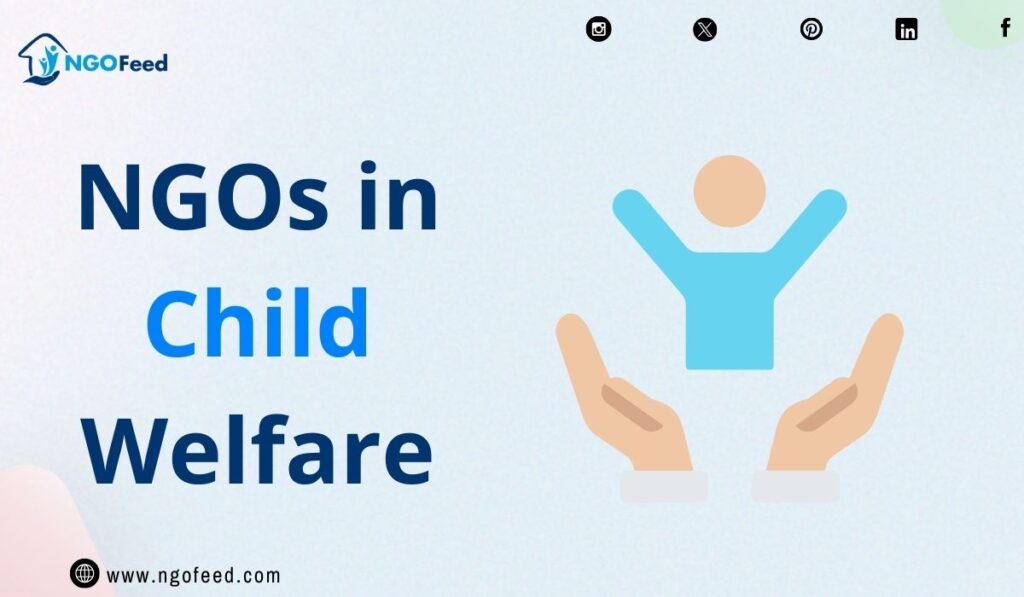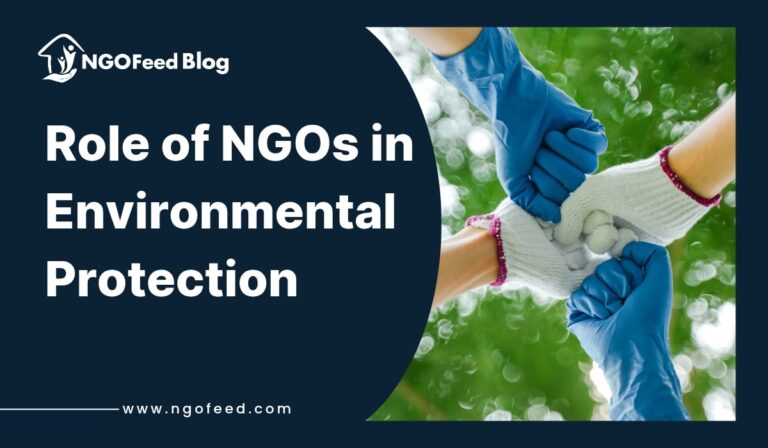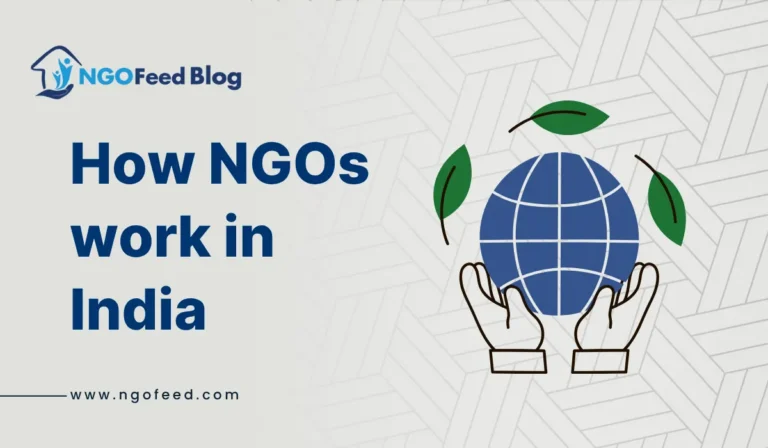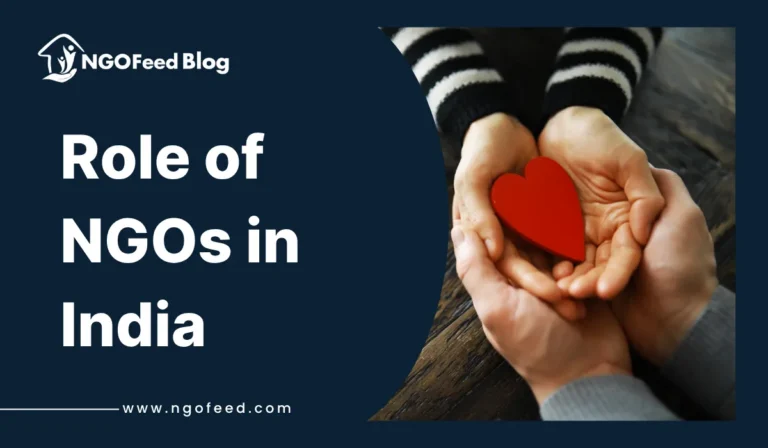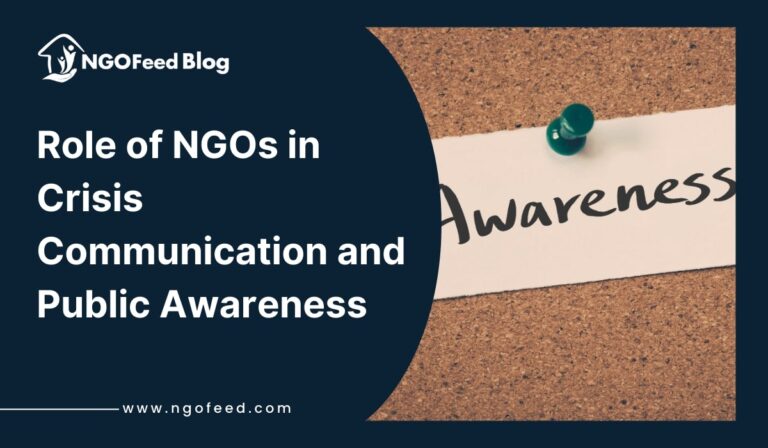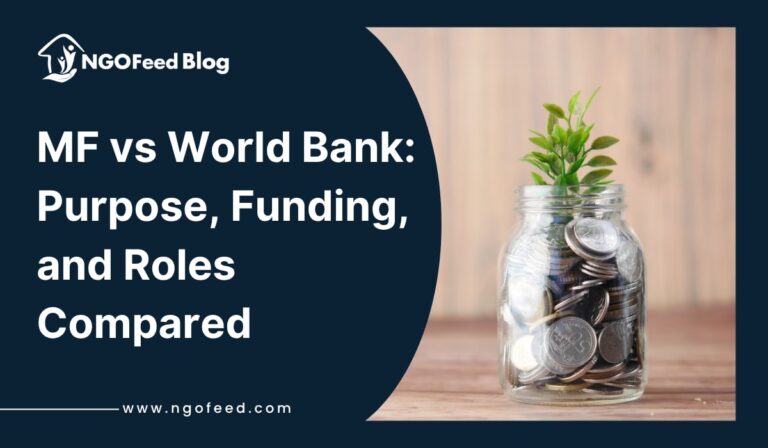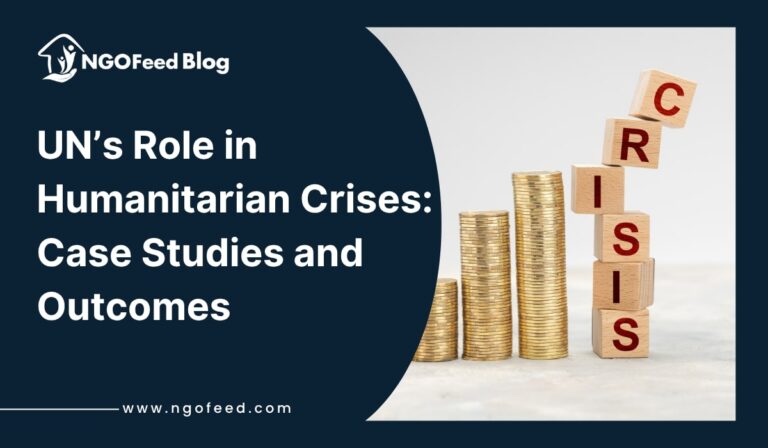NGOs in Child Welfare: Violence against children is widespread and remains a harsh reality for millions of children from all socio-economic groups in India. Both girls and boys in India face early marriage, domestic abuse, sexual violence, violence at home and in school, trafficking, online violence, child labour and bullying. All forms of violence, abuse and exploitation have lifelong consequences on children’s lives.
Table of Contents
A Holistic Approach to Child Welfare
Here steps the cornerstone of a society’s dedication to the security, growth, and well-being of its youngest citizens is child welfare. It entails a wide range of services intended to guarantee that kids are raised in secure, supportive surroundings that advance their cognitive, emotional, and physical growth.
This field strives to safeguard children from abuse, exploitation, and neglect by spanning multiple sectors such as healthcare, education, social services, and legal frameworks by playing an important role in determining the future of communities and countries.
Legal Framework and Policies for Child Welfare
India has a fairly comprehensive policy and legal framework addressing rights and protection for children, providing opportunities to ensure that all children have equal access to quality protection services.
The core child protection legislation for children is enshrined in four main laws: The Juvenile Justice (Care and Protection) Act (2000, amended in 2015); The Prohibition of Child Marriage Act (2006); The Protection of Children from Sexual Offences Act (2012), and The Child Labour (Prohibition and Regulation) Act (1986, amended in 2016).
Over the past five years, notable efforts have been made to set up fast-track courts and deal with cybercrime against children and women. In 2019, the Protection of Children from Sexual Offences Bill was amended, stipulating stricter punishment for sexual crimes against children.
Various Other Acts for Enabling Child Protection in India
- Guardians and Wards Act 1890: Supersedes all laws on child guardianship, providing a universal code for Muslims, Parsis, Christians, and Jews.
- Immoral Traffic (Prevention) Act (Amended in 1986): Criminalizes child prostitution and addresses the punishment for those involved with minors.
- The Women’s and Children’s (Licensing) Act 1956: Requires institutions for women and children to obtain a licence before opening or continuing operations.
- National Policy for Children 1974: India’s first written law for children, aiming to uphold CRC-awarded and constitutional rights, including free education and health provisions.
- Bonded Labour System (Abolition) Act 1976: Seeks to abolish the practice of “bonded labour” particularly affecting weaker members of society, including children.
Also Read: Role of NGOs in Girl Child Education
Challenges for Children in India
In the past 20 years, India has demonstrated outstanding progress in human development. Given the magnitude of India’s population, we still have a long way to go to better the situation of disadvantaged kids.
India still has a lot of issues to deal with, including child mortality, malnutrition, health, and many others. The top five challenges faced by children are discussed below.
Health problems
Most children under the age of five die from hunger and diarrhoea. Inadequate nutrition and poor cleanliness are to blame for these problems. It causes infection, which causes a child’s body to lose minerals and cause them to lose their appetite. Every 20 seconds, a kid in India passes away from an illness that could have been avoided, such as pneumonia, complications from premature delivery, diarrhoea, and malaria. According to NFHS, 25 million children in India have a low weight-to-height ratio. In India’s rural and slum areas, one-third of wasted children reside.
Concerns with child mortality.
In terms of child mortality, India leads the world. 1.2 million child fatalities were reported in 2015 alone. According to a different survey, 1.83 million youngsters die before turning five. Join the greatest children’s NGOin Dehradun to assist those less fortunate kids and offer them a fresh start.
Also Read: Role of NGOs in Youth Empowerment
Lack of educational opportunities.
India still has work to do in the area of education. A higher literacy rate depends on primary education, sometimes undermined in our nation’s rural areas. Girls experience greater hardships in terms of their education. Because kids require family support in addition to investments in their education. Our non-profit organisation in Dehradun rescues kids and ensures they have access to school, basic healthcare, and housing.
The exploitation of kids.
Even now, social ills like human sex trafficking, child labour, domestic help, etc., imprison children. More than 12 million kids still work in factories and industries to earn a living. Many victims who fell prey to these risky societal concerns have received sanctuary from our NGO.
Also Read: Role of NGO in Food and Nutrition
Abuse of kids.
The most frequent types of child abuse are violence and sexual abuse. In India, child abuse is a social ill that has spread like an epidemic. On a personal level, we must safeguard children from these problems and tough laws must be upheld to hold perpetrators accountable. Child sex abuse occurs everywhere. It happens in all spheres of life, including relationships, geography, and economic standing. In the past, all of this has resulted in kid suicide and child sadness.
Issues and Statistics on Child Abuse in India
India is a country that is rich in culture and diversity. With over 1.3 billion people, it is the second most populous country in the world. And while this population is a source of strength, it also comes with its share of problems.
In fact, according to recent statistics, over 90% of Indian children experience some form of abuse before they reach the age of 18. This is a grave statistic and one that demands our attention.
Awareness and Training Programs Focused on Prevention
No matter how many laws and regulations are in place, nothing can truly substitute for awareness and training. In India, authorities have established programs to help prevent child abuse by educating parents, teachers, caregivers, and other stakeholders on the issue.
These initiatives tend to focus on training people to be able to identify signs of abuse and create a safe environment for children. Workshops, seminars, forums, and other interactive events are organised to provide an opportunity for the community to learn more about the law, and share their experiences and ideas on how best to tackle this problem.
Additionally, these programs strive to give people an understanding of their obligations and responsibilities when it comes to identifying cases of child abuse and taking action against them. They also encourage people to talk about the issue with their children so that everyone knows what is acceptable behaviour and what isn’t.
Also Read: Role of UNESCO in Education
Some NGOs in Child Welfare
Save The Children
Established in 1919, Save the Children is a worldwide nonprofit organisation. It is currently the top independent child rights NGO in India. They were operating in 19 Indian states as of December 2018. Started in 2008 in India, and registered as ‘Bal Raksha Bharat’, they have altered the lives of more than 10.1 million (1.1 crores) youngsters to date. They reached 12.03 lakh children in 2018. Because they fervently care that children not only survive but also thrive, Save the Children is dedicated to the belief that every kid deserves the finest opportunity for a bright future. They conduct initiatives to deliver high-quality healthcare and education, safeguards against violence and abuse, and life-saving.
Katha
Started in 1988 with a magazine for children from the underserved communities, Katha’s work spans the literacy to literature continuum. By seamlessly connecting grassroots work in education and urban resurgence, Katha brings children living in poverty into reading and quality education. Over the past three decades, through its many programmes, Katha has helped over one million children help themselves out of poverty.
Katha has several programmes in place to help check poverty across the country. Katha Lab School, Katha’s Slum Resurgence Initiative (SRI), Katha English Academy (KENGA), Katha School of Entrepreneurship (KSE), etc. are some of the many programmes Katha runs to ensure the child receives holistic learning.
KC Mahindra Trust
Project Nanhi Kali provides 360-degree support to underprivileged girls from Class 1-10, with the objective of enabling them to complete their schooling with dignity. The project provides daily academic support as well as an annual school supplies kit, which allows the girls to attend school with dignity.
The team works extensively with the families of the girls and community stakeholders to sensitise them towards the importance of girls’ education. This daily contact with the girls and close connection with their families helps them to develop safe, conducive, girl-friendly ecosystems across the project.
Also Read: Role of NGOs in Skill Development
Conclusion
One of the main tenets of creating a just and equitable society is child welfare. Ensuring the protection, well-being, and development of children is not simply a moral imperative but also a necessary investment in the future. Government policies, legal frameworks, and the cooperative efforts of many stakeholders such as communities and non-governmental organisations all contribute significantly to protecting children from exploitation, abuse, and neglect.
Prioritising children’s rights to safety, health, and education allows nations to provide a nurturing atmosphere in which all children can flourish. A brighter future for everybody and stronger, more resilient communities are facilitated by efficient child welfare systems.

